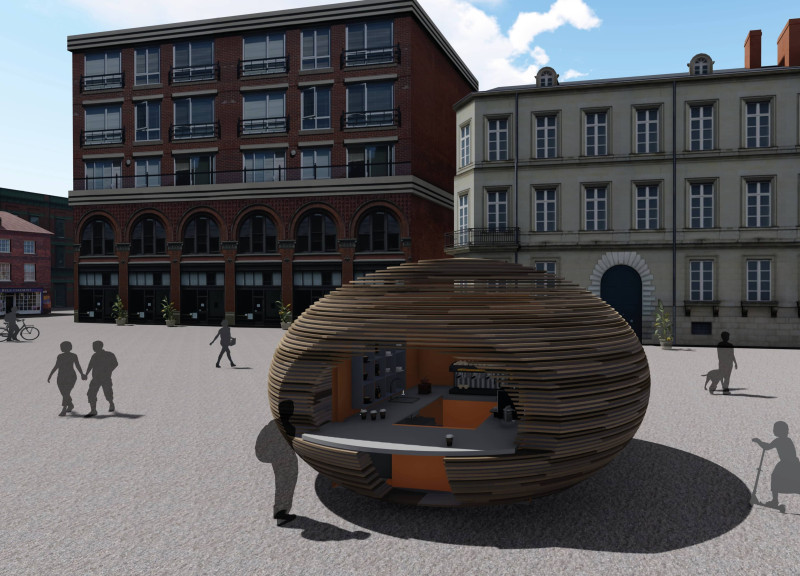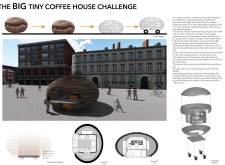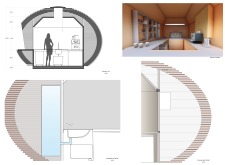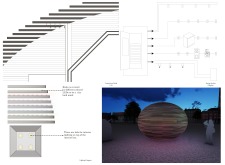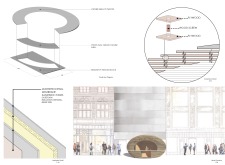5 key facts about this project
The Big Tiny Coffee House Challenge offers a thoughtful interpretation of coffee culture along Stroget Street, the longest pedestrian street in Copenhagen. Designed as a coffee kiosk, it reflects a concept inspired by the shape of a coffee bean. The aim is to create a welcoming space that not only serves coffee but also encourages people to gather and interact. At night, the structure is illuminated, making it a recognizable spot that stands out in the bustling city.
Design Concept
The kiosk consists of two main parts: an outer shell and an inner core. This design allows for a balance between visual appeal and functionality. The outer shell draws inspiration from the coffee bean's unique shape, which adds an engaging element to the urban setting. The design is intentional, as it connects with the deeper significance of coffee culture for the community.
Accessibility plays a crucial role in the layout. The opening at the front connects the barista directly with customers, which encourages a lively exchange. This feature supports easy interaction, making the experience more personal. Additionally, height-adjustable legs provide stability on uneven ground, ensuring that the kiosk is adaptable to various locations.
Materials and Construction
The structure utilizes materials that enhance both its durability and portability. Anti-graffiti coating plywood and 24 mm plywood are principal choices due to their strength and lightweight nature. Wooden screws aid in constructing a self-supporting outer shell. Within the kiosk, grey and clean water tanks, along with electrical and plumbing systems, are organized to fit neatly. This arrangement allows for efficient operation while maintaining the overall visual harmony of the design.
Lighting and Ambiance
Lighting is an important element that enhances the kiosk's character. Colored LEDs are incorporated to highlight the structure's design features. This thoughtful use of lighting not only improves visibility but also adds a sense of vibrancy, especially during the evening hours. The way light interacts with the surface creates an inviting atmosphere, drawing attention from those passing by.


